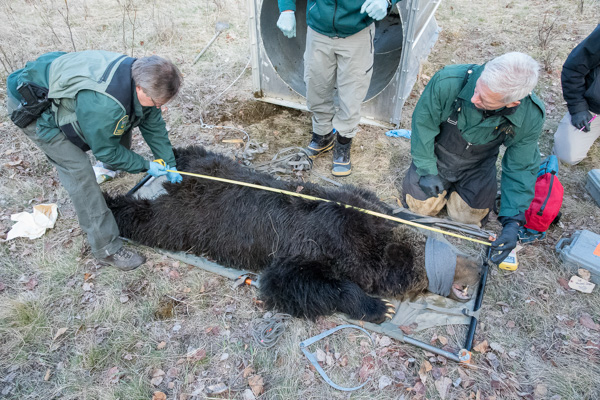
Article published in Canadian Journal of Zoology. Citation and abstract only.
Abstract
In this investigation a body-condition index (BCI) was developed for polar bears (Ursus maritimus), black bears (Ursus americanus), and grizzly bears (Ursus arctos), based on residuals from the regression of total body mass against a linear measure of size, straight-line body length (SLBL). Transformation of mass-length data from 1198 polar bears, 595 black bears, and 126 grizzly bears to natural logarithms resulted in a linear relationship between mass and length. However, the relationship in polar bears differed from that in black and grizzly bears. SLBL had a close positive relationship with skeletal (bone) mass in polar bears (n = 31) and black bears (n = 33), validating the use of SLBL as an accurate index of body size. There was no correlation between SLBL and BCI for polar bears (r = 0.005, p = 0.87, n = 1198) or for black bears and grizzly bears (r = 0.04, p = 0.30, n = 721), indicating that the BCI was independent of body size. The BCI had a close positive relationship with true body condition, measured as the standardized residual of the combined mass of fat and skeletal muscle against SLBL, in polar and black bears that were dissected to determine individual tissue masses. The BCI also had a close positive relationship with the standardized residual of fat mass against SLBL. Estimation of BCI values for polar bears, or for black bears and grizzly bears, is facilitated by prediction equations that require measurement of total body mass and SLBL for individual animals.
Citation
Cattet, M. R. L., Caulkett, N. A., Obbard, M. E., & Stenhouse, G. B. (2002). A body-condition index for ursids. Canadian Journal of Zoology, 80(7), 1156–1161. doi:10.1139/z02-103







